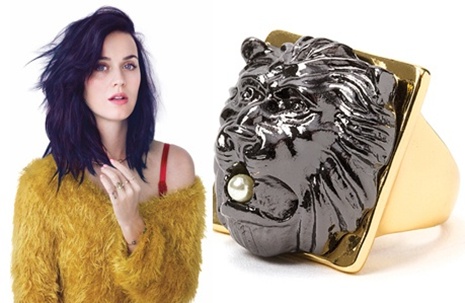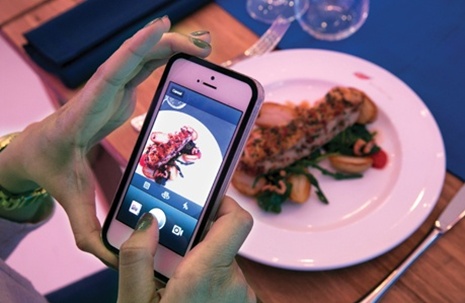How honest is your brand online?
The surge in social media’s popularity has led to some brands using it dishonestly to promote their goods, but as a result the whole marketing industry is being undermined and consumers are losing trust.
As marketers try to develop the most business benefit from using social media, another challenge is coming their way. Brands’ dishonest practices on social media may be undermining the entire marketing industry, according to a study by the Chartered Institute of Marketing (CIM).
MasterCard came under fire earlier this year for trying to bribe a journalist to send promotional tweets, while Samsung was fined in Taiwan for posting fake online reviews. Last year, Channel 4’s documentary Celebs, Brands and Fake Fans revealed just how easy it is to fraudulently increase social media audiences by buying followers from ‘click farms’ in countries such as Bangladesh.
Such questionable behaviour is unsurprisingly having a big effect on consumer confidence. Almost half (44 per cent) of those surveyed in CIM’s Keeping Social Honest study find it difficult to trust brands on social networks. It spoke to 3,000 people across the UK, and 1,150 marketers from businesses of all sizes, in partnership with YouGov and Bloomberg.
Sadly, the above examples of underhand brand behaviour are not isolated cases. The research, shared exclusively with Marketing Week , finds that 51 per cent of marketers have seen questionable content from brands on social media in the past six months. However, although more than half admit there is a problem and 52 per cent agree that the effectiveness of the channel as a marketing platform is at risk due to dishonest behaviour, nearly all deny having anything to do with it.
Only 2.1 per cent admit to faking reviews on social media, 2.3 per cent say they have bought ‘fans’ and 1.5 per cent admit to falsifying user-generated content.
Growing cause for concern
Although only 1.3 per cent of marketers confess to paying for people to promote their brand editorially, it is a concern for brands that are looking to operate above board, according to Elizabetta Camilleri, chief executive and co-founder of UK fashion start-up SalesGossip.co.uk.
“We have approached bloggers and people on social media to let them know about our brand and to see if they would like to support us and they’ve said sure, that will cost £2,500. It happens all the time, which is very frustrating,” she says.
The acts of a few should not tarnish everyone, of course, and many brands have long-standing relationships with bloggers in the same way they do with journalists. But Hind Hadj, head of European press and marketing at accessories retailer Claire’s, says it is essential to be honest and upfront, particularly when talking to younger people.
“We interact with bloggers who talk to our target audience and whose content is in line with our brand strategy but it’s about establishing a real relationship,” she says. “We pride ourselves on being ethical and will not ask someone to tweet or write a blog post for us or pay bloggers.”

Claire’s Accessories is upfront about its relationship with bloggers
A transactional fee is discussed only for wider sponsorship campaigns, where it is clear that a blogger is being paid to promote its brand. For example, former Made in Chelsea star Millie Mackintosh was signed by Claire’s earlier this year to be the face of the brand for a stint and it is currently collaborating with singer Katy Perry.
Authenticity is essential
“If it’s not genuine, consumers will see through it straight away,” warns Hadj. “Authenticity is key, otherwise consumers will switch off.”
Brands should take note because 47 per cent of consumers say they will boycott a brand if it is found to be manipulating the system and 64 per cent will stop using social media if it becomes too overloaded with ads and marketing messages.
“Marketers have to figure out a way to live in this space comfortably without trying to be something they’re not as a brand,” advises Margaret Jobling, marketing director at Birds Eye (for examples of when brands have got it wrong, see Social Media fails below[1]). It has been pushing social media up the agenda since realigning the brand earlier this year.
Food manufacturers have historically spent a lot of time creating slick, polished images of their products, she says, but people in the social space tend to take pictures of food on their smartphone, so marketers have to be mindful of these nuances.
Play to the rules of the channel

Birds Eye harnesses the ‘amateur’ photography element of social media with its Inspirations pop-up restaurant campaign
“Using glossy images from outdoor and press campaigns on Facebook or Instagram isn’t in keeping with the medium, so we are having conversations about how to be more real,” she says. “Should we be taking pictures on our smartphones and posting them to the brand page? It is more relevant to the channel, so rather than trying to play it as a branded food manufacturer, we are thinking about how to play the game to the rules of channel.”
Taking that cue, Birds Eye opened a pop-up restaurant in London where diners could get a free meal by posting an image of it on Instagram.
The restaurant was open to competition winners and trade for three days and was designed to create a buzz around the launch of its Inspirations range. More than 600 images were uploaded during the event and #BirdsEyeInspirations appeared on 3.5 million social media feeds says Jobling.
This shows that consumers are connecting with brands on social media. Despite their apparent scepticism, 75 per cent of Twitter users have interacted with a brand in the past three months and more than 50 per cent on Facebook, finds the research.
Luxury brands have been slower off the mark to embrace social media but hotel chain Ritz-Carlton is looking to remedy that with its ‘six word wows’ campaign, which invites customers to share condensed versions of their experiences.
Clayton F Ruebensaal, vice-president of marketing, believes it will create intrigue around the brand and enable it to become part of the conversation in a more authentic way, which he hopes will increase advocacy.
Clear marketing messages

British Gas felt the wrath of consumers when it invited them to get in touch on social media on the day it hiked prices by 9.2 per cent
“The goal of this campaign is to link the Ritz-Carlton brand and the idea of memories together because we know from research that the number one thing that people will pay more for is an unforgettable experience,” he says.
“This is how people are sharing their personal memories, so this is one way we can inject ourselves into that conversation.”
Ritz-Carlton kicked off the campaign by sharing guests’ experiences, such as ‘Honeymoon misfortune. Aloha recreated. Love prevails’, which is the story of a couple who were unable to get to Hawaii for their honeymoon so the staff at the hotel created a tropical-themed surprise in their room.
The brand has made the effort to make it clear that these initial interactions have come from Ritz-Carlton, returning to CIM’s research, only 38 per cent of consumers say they can always tell the difference between marketing and non-marketing messages. The majority of consumers (63 per cent) also find it difficult to know if brands are using questionable tactics, which could be why only 22 per cent say they have seen brands acting dishonestly or unethically on social media, compared to more than half of marketers.
There is huge disparity between what marketers and consumers believe is acceptable. While 66 per cent of brand owners think it is OK to give products away for free to encourage positive online reviews, 48 per cent of consumers think this is ethical.
Similarly, 70 per cent of businesses say it is acceptable to encourage employees to like and share brand messages on social media, but just 28 per cent of consumers feel comfortable with the idea (see 10 rules for brands below[2]).
“It is in every brand and marketer’s best interests to take this more seriously,” cautions Thomas Brown, associate director of research and insights at CIM.
“Even if a small portion of the industry continues to manipulate and damage the trust of consumers, we will all be tarred with the same brush and it will impact the effectiveness of the medium for all marketers.”
Regulations
However, the rules and regulations on social media are confusing for both marketers and consumers (see social media regulation below[3]). For example, a third of marketers say the laws that apply to social media are only based on the location of the platform’s headquarters, which is not true, while 64 per cent suggest the rules are too focused on traditional media, and 7 per cent have no understanding of the regulations at all.
More than half of consumers (54 per cent) believe there should be more regulation to keep advertisers in check. Unsurprisingly, marketers are less keen on the idea, but even so, 32 per cent do believe it would better to protect their brand and reputation. The majority (82 per cent) also admit that without the threat of punitive fines or legal action there will always be businesses that employ questionable tactics on social media.
In order to keep on top of regulatory requirements and stay up to date with what is happening in the fast developing space, businesses are looking at ways to improve their knowledge.
Birds Eye is “actively looking to hire people with expertise in social media” as part of its recruitment brief, says Jobling. Meanwhile Tesco chief executive Philip Clarke keeps abreast of new technology and digital innovation through regular ‘reverse mentoring’ sessions with younger employees.
Social media has created a wealth of opportunities for brands but if they want to increase trust and connect with consumers in the long-term, it has got to be done in an honest, transparent and authentic way. If not, brands will simply be cut out of the equation.
10 rules for brands
1. Define the right policies for your organisation: Don’t assume that every employee, alumni, partner or client will have the same view – commit your policy to writing so it can be shared.
2. Appoint a champion: Identify a member of your marketing team to take on the role of champion for social media compliance – both regulatory and good practice.
3. Embed social media policies internally: Remember that any employee active on social media can contribute to, or detract from, your organisation’s voice
4. Share your social media position publicly (and proudly): Once you’ve articulated a ‘code’ for your organisation, publish it so that clients and stakeholders can see what you’re committing to.
5. Adopt social media compliance as a professional development priority: Take responsibility for building compliance into your personal development.
6. Involve your employees in social media, but signpost their affiliation: An employee’s voice should be encouraged, not forced and make sure they clearly identify their employment on their profiles.
7. Commit agency partners to shared ‘good behaviours’: The pressures of unachievable social targets and activity-based metrics such as volumes of likes, shares or views can be a dangerous source of ‘bad behaviour’ on social media.
8. Take an active role in the debate: Social media is still in its infancy, relative to more established media and technologies. Marketers should get involved in shaping the right regulatory and responsibility frameworks.
9. Revisit your policies and standards regularly: Review policies annually and get feedback from employees. Compare them with those inside and outside your sector.
10. Commit to abolish ‘no go’ practices: These include using SEO to hide negative comments, deleting poor reviews and paying ‘clickfarms’ to generate views, likes or shares.
Marketers’ understanding of the regulatory environment for advertising and branded content on social media is poor, according to the Chartered Institute of Marketing’s Keeping Social Honest study.
Almost half (45 per cent) of marketers say they do not have enough knowledge of regulation to apply it to decision making, and 43 per cent feel the regulations governing marketing activity on social media are too complex.
In 2011, the Committee of Advertising Practice extended its remit to cover advertising on social networks and marketers must abide by the Consumer Protection from Unfair Trading Regulations (2008), which is enforced by the Office of Fair Trading and covered by the Advertising Standards Association (ASA) for marketing.
Nike was the first brand to be rapped by the ASA in 2012 after footballers Wayne Rooney and Jack Wilshere tweeted using the brand’s #makeitcount hashtag without making it clear it was part of a marketing campaign.
The sports giant argued that the players and their teams are known for being sponsored by Nike and concluded their Twitter followers “would not be misled about the relationship between the footballers and Nike”.
Despite only one complaint, the ASA said the tweets were not “obviously identifiable as Nike marketing communications” and therefore breached the code.
Snickers came under fire for its ‘You’re not yourself when you’re hungry’ campaign, which saw celebrities post out-of-character tweets before a final message explaining the situation alongside the product and slogan. It was cleared, however, since the ASA said the last tweet made it obvious it was a marketing campaign and none of the previous messages referred to the brand.
To help marketers and brands understand the regulations, IAB UK and ISBA issued guidelines for different platforms in 2012:
Twitter: Brands should use the #ad or #spon hashtags to make it clear to consumers that the message has been paid for.
Facebook: Brands should not pay individuals to promote products or services on their page, even with disclosure, as it would contravene Facebook’s terms of service.
Blogs: Brands should ensure that the author or publisher discloses any payment within the body of the blog so it is clear to the reader. If linking to a branded site, a ‘nofollow’ attribute should be included.
Video: Brands must disclose any payment within the content of the video itself to ensure it is transparent.
Forums: Brands should follow the forum’s community guidelines or moderation policy. If this is unavailable, marketers should contact the administrator of the forum to seek permission to post content themselves.
McDonald’s
In January 2012, fast-food giant McDonald’s tried to encourage consumers to engage with the brand and share positive anecdotes using the hashtag #McDStories. However, it was instead deluged with customers complaining about poor hygiene, people getting sick and the discovery of a false fingernail in a portion of fries.
MasterCard
Members of the press and the general public used MasterCard’s #PricelessSurprises hashtag to share their outrage rather than joy after it was revealed the brand’s PR agency tried to bribe a Telegraph journalist with entry to the Brit Awards in February on the understanding that he send a number of pre-drafted tweets.
After the incident, the brand released a statement reprimanding the agency’s actions as “highly inappropriate” but the damage had already been done. “Having your crass social media campaign backfire on you spectacularly #PricelessSurprises” is one example.
Samsung
Smartphone giant Samsung was fined £212,000 last October after Taiwan’s Fair Trade Commission investigated claims that it had paid individuals to write positive reviews about its devices and post negative comments about rival HTC. The scam was revealed by website TaiwanSamsungLeaks.org, which showed what it claimed to be internal documents outlining the strategy.
However, the fine will not make much of a dent as the manufacturer posted another record quarter on the same day with net profits reaching £4.7bn.
UKIP
The party’s ‘#WhyI’mVotingUKIP’ hashtag was hijacked before the European election last month with Twitter users mocking some of its members views on gay rights and immigration. One user wrote: “‘#WhyI’mVotingUKIP’ Because the weather’s really starting to pick up, and I don’t want it ruined by gays.”
Despite the backlash, the party won 27.5 per cent of the vote in the election.
What British Gas learnt from the #AskBG debacle
British Gas has been proactively using social media for the past three years but was left red-faced last October after inviting consumers to get in touch with its customer service director, Bert Pijls, using the #AskBG hashtag on the same day it announced a 9.2 per cent price hike.
Rather than allaying consumers’ concerns, the energy giant was hit with an onslaught of sardonic questions as people vented their anger.
One user asked: “Which items of furniture do you, in your humble opinion, think people should burn first this winter?”.
Laurence Hill, head of omnichannel says: “#AskBG was important for us. Our principles of being helpful and informative remain but it gave us an opportunity to reappraise.”
British Gas is now placing more focus on being responsive.
“We probably underestimated the growth of social media and the speed at which it was moving. We weren’t responding in the volume or as fast as we needed to. One of the key pillars of our plan after #AskBG was to build a bigger team of social media experts who can respond to customers, stakeholders or politicians through social media channels,” says Hill.
British Gas now has a team of 14 responding to queries every day, enabling it to halve response time and resolve issues before they escalate out of control. Hill claims it has had a “significant impact” in boosting customer sentiment.
References
- ^ Social Media fails below (www.marketingweek.co.uk)
- ^ see 10 rules for brands below (www.marketingweek.co.uk)
- ^ social media regulation below (www.marketingweek.co.uk)









